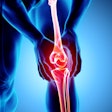Point-of-care lung ultrasound (lung POCUS) may be useful in the emergency department for diagnosing dyspnea, according to a study published April 22 in Emergency Radiology.
Researchers led by Adi-Ionut Ciumanghel, PhD, from the Clinical Emergency County Hospital in Iași, Romania, found that emergency physicians used lung POCUS well for detecting symptoms of dyspnea and completed scans at shorter times than attending physicians.
“Given its availability, [lung POCUS] is a useful tool for the assessment of patients presenting with dyspnea,” Ciumanghel and colleagues wrote.
Acute dyspnea – or sudden shortness of breath – is a symptom that commonly presents in the emergency department and could indicate a variety of pulmonary or cardiac diseases. A rapid and accurate diagnosis can guide timely and appropriate care for patients.
Ciumanghel et al wrote that their department began using lung POCUS due to their hospital’s emergency department being overcrowded and their radiology department being overwhelmed by high x-ray and CT scanning volumes. They highlighted that lung POCUS can identify causes of acute dyspnea, improve patient flows in the emergency department, and prevent expensive imaging tests that may use radiation.
The team studied the concordance between emergency physician diagnosis via lung POCUS and attending physician diagnosis (which includes lab tests, CT scans, and specialist assessments) in patients presenting with dyspnea.
The study included prospective data collected between 2022 and 2024 from 103 emergency department patients with an average age of 70. The team included dyspneic patients who presented when the physician involved in the study was on call.
 Images show lung ultrasound findings of major pleuro-pulmonary pathologies. (a) Pleural effusion; (b) Pneumonia; (c) Bronchopneumonia; (d) Acute pulmonary edema; (e) Chronic obstructive pulmonary disease exacerbation; (f) Pleuropulmonary tumors; (g) Acute respiratory distress syndrome.Springer
Images show lung ultrasound findings of major pleuro-pulmonary pathologies. (a) Pleural effusion; (b) Pneumonia; (c) Bronchopneumonia; (d) Acute pulmonary edema; (e) Chronic obstructive pulmonary disease exacerbation; (f) Pleuropulmonary tumors; (g) Acute respiratory distress syndrome.Springer
The group also used Cohen’s kappa coefficient for measuring agreement between emergency and attending physicians. Both physicians showed excellent agreement in diagnosing the following causes of acute dyspnea: pleural effusion (κ = 1 for bilateral, 0.844 for right, 0.79 for left pleural effusion), pneumonia (κ = 0.979 for right, 0.93 for left), bronchopneumonia (κ = 0.912), acute pulmonary edema (κ = 1), chronic obstructive pulmonary disease exacerbation (κ = 0.904), pleuropulmonary tumors (k = 0.884), and acute respiratory distress syndrome (κ = 1). All the results were statistically significant (p < 0.001).
Emergency physicians took a median time of 16 minutes to complete scans with lung POCUS compared to the median 480 minutes needed for diagnosis by attending physicians.
The study authors highlighted that lung POCUS could inform strategies for high-volume emergency departments that experience delays in diagnosis. They added that the modality could be useful in imaging patients who are too unstable to be transported to the radiology department.
“For these patients [lung POCUS] has the advantage of being available at bedside, decreasing the risks associated with transport,” the authors wrote. “Also, there is a negligible cost of each individual … examination.”
The full study can be found here.



















